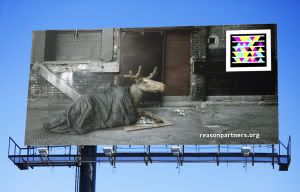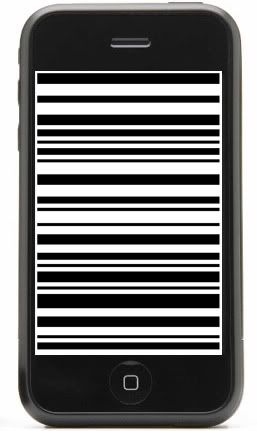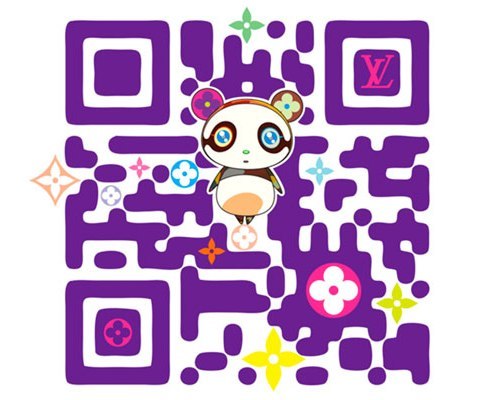Barcodes may be key to our health
![BarcodeFood[1]](https://www.barcodesinc.com/news/wp-content/uploads/2009/07/BarcodeFood1.jpg) When an outbreak of food borne illness from salmonella or E.coli contamination happens, it scares consumers and farmers alike. That’s partly due to the fact that finding the source of the bacteria can take weeks, months, even years.
When an outbreak of food borne illness from salmonella or E.coli contamination happens, it scares consumers and farmers alike. That’s partly due to the fact that finding the source of the bacteria can take weeks, months, even years.
Spinach, jalapenos, peanuts, pistachios are all foods that share a bad reputation due to outbreaks of bacteria like E.coli and salmonella. But some food safety experts say their problems could be solved by using barcodes.
“This is not rocket science and there are companies in the U.S. who are doing that kind of tracing system today. It’s just not required. Its not mandated,” said Caroline DeWaal, Center for the Science in the Public Interest.
DeWaal says barcodes are used for different farms and manufacturers anyway, so why not connect them from farm to fork?
Story continues below
Advertisement
“If this barcode had a code that FDA standardized and made recognizable across the industry, the agency could more easily trace these products,” said DeWaal.
Outgoing FDA director David Acheson agrees.
“We get piles of records — it’s pieces of paper, it’s invoices. And we bring them back here and it literally is a paper and pencil exercise. And I think one of the challenges right now that we all have to face is what can we do to make this more automated?” explains David Acheson, FDA.
The answer might be to look to overseas where they’re already doing it.
“Tesco which is the third largest retailer in the world actually has a bullet proof system over in Europe and it’s going to come here,” said Phil Lempert, market analyst.
Lempert says everything the company sells is connected to a computerized barcode system.
“In a matter of seconds you’ll know everything about that product: what truck it was on, who were the names of the employees that were working in that field that day, when it was produced,” said Lempert.
But when a food borne illness breakout occurs, we look to the government for help. Establishing such a barcode tracking system will cost millions if not billions of dollars, something the government would prefer the food industry pay for.
“I would not see the federal government paying for that. The industry needs to step up to the plate and seriously look at what could they do to introduce these systems? Now I don’t think that comment will be popular because it’s going to cost,” said Acheson.
Advertisers Only A Snapshot Away With ‘Tag’ Technology
![qrtag[1]](https://www.barcodesinc.com/news/wp-content/uploads/2009/04/qrtag1.jpg) A popular technology overseas that links mobile users to the ever-evolving world of advertising is gearing up for its debut here in the U.S. NY1’s Adam Balkin filed the following report.
A popular technology overseas that links mobile users to the ever-evolving world of advertising is gearing up for its debut here in the U.S. NY1’s Adam Balkin filed the following report.
It’s a use for the mobile phone that’s taken off in Japan, and now Microsoft is hoping to bring the same excitement to the United States. In Japan, they’re black and white and called “quick response” or QR Codes. Here they’re color and called Tags. Tags are kinda like high-tech barcodes that you take a picture of with your cell phone’s camera. The image then immediately takes you to wherever the creator of that tag wants to take you online.
“Using the camera on your phone, you can read a Tag and be taken to a website for information, you can get contact information, you can be provided text information,” said Kevin Kerr, Microsoft. “So imagine reading a Tag at a movie theater and being able to play the trailer for that particular movie, or reading a Tag for a particular product at a store or a sign at a bus stop to understand when the next bus in coming for that particular bus stop. So these Tags can exist in magazines, you can put them in posters, on websites, digital signage.”
While these types of technologies have been tried in the past with little success, those who own a G1 Google phone have recently warmed to the idea thanks to an application that lets you snap shots of barcodes on products and instantly comparison shop online.
In fact, those QR Codes started a test run a year ago in San Francisco. So why do Tag developers think their concept is the one that will finally take hold? And the other obvious question — why not just link to barcodes that are already all over the place?
“The QR Code and those other things are black and white. They were designed for industrial usage. These are colors, so we have the ability to do logos and other things that are much more interesting,” said Kerr. “If you want to target demographics with this new type of mobile technology you have to do something interesting as well as functional.”
Tags work on just about any phone with a camera, including iPhones. Go to www.gettag.mobi for the free download to make it work.
Right now, Tags are in beta, or development, which means anyone can go to www.tag.microsoft.com and create a Tag for free. What that Tag points to can be updated every day, or even every hour if you want. Microsoft says if, down the line, it does start charging to create tags, any created during the beta period will be grandfathered in and remain free forever.
Object-Based Media Project Brings iPhone and RFID Together
![iphone-rfid-04-15-09[1]](https://www.barcodesinc.com/news/wp-content/uploads/2009/04/iphone-rfid-04-15-091.jpg) RFID technology has turned up in plenty of surprising places, but there hasn’t exactly been the explosion of iPhone-related development that you may have expected. The lack of an easily accessible RFID reader may have something to do with that, but that doesn’t seem to have stopped the folks behind the Touch research project, who rigged up a not-so-discreet RFID reader and put it to some fairly inventive tasks. That includes assigning various media to different objects, like a Bob the Builder video clip that’s linked to a Bob the Builder toy, a clip of Chuck Norris kicking a car in the face that’s linked to a Chuck Norris action figure (which doesn’t even have an RFID chip), and a dynamically-updated MAKE podcast that’s linked to a slightly nerdy fellow. Of course, all of this is primarily a proof of concept, and the researchers behind the project see plenty of potential for other applications, including everything from gaming to marketing. Head on past the break to check it out in action.
RFID technology has turned up in plenty of surprising places, but there hasn’t exactly been the explosion of iPhone-related development that you may have expected. The lack of an easily accessible RFID reader may have something to do with that, but that doesn’t seem to have stopped the folks behind the Touch research project, who rigged up a not-so-discreet RFID reader and put it to some fairly inventive tasks. That includes assigning various media to different objects, like a Bob the Builder video clip that’s linked to a Bob the Builder toy, a clip of Chuck Norris kicking a car in the face that’s linked to a Chuck Norris action figure (which doesn’t even have an RFID chip), and a dynamically-updated MAKE podcast that’s linked to a slightly nerdy fellow. Of course, all of this is primarily a proof of concept, and the researchers behind the project see plenty of potential for other applications, including everything from gaming to marketing. Head on past the break to check it out in action.
Facial Barcodes Help Us Identify People

Natural ‘barcodes’ of information, built into human faces for recognition of other people, may also help improve face recognition software, according to a study.
Faces convey a vast range of information about people, including their gender, age and mood. For humans, the ability to locate a face is important as this is where we pick up many of our cues for social interactions.
While recognising a person’s face is a complex process, the first steps to processing visual information in the brain are thought to be more basic and to rely on the orientation of features such as lines.
By manipulating images of celebrities like Chris Martin and George Clooney, Steven Dakin from University College London (UCL) and Roger Watt, professor, University of Stirling, showed that nearly all the information we need to recognise faces is contained in horizontal lines, such as the line of the eyebrows, the eyes and the lips.
Further analysis revealed that these features could be simplified into black and white lines of information- in other words, barcodes.
Dakin believes the research may have implications for improving face recognition software, for example, for use at an airport where police may need to locate a suspect in a crowd on CCTV cameras.
The ability of such software to recognise individuals has improved vastly, but is still poor at the first step: locating faces in complex scenes.
“Exposed skin on our forehead and cheeks tends to be shiny whilst our eyebrows and lips and the shadows cast in the eye sockets and under the nose tend to be darker,” said Dakin, an opthalmalogist. “The resulting horizontal stripes of information are reminiscent of a supermarket barcode.”
Supermarket barcodes were developed as an efficient way of providing information: straight, one-dimensional lines are far easier to process than two-dimensional characters such as numbers.
In a similar way, our faces may have evolved to allow us to convey effectively the information needed to recognise them, said an UCL release.
Barcoding Billboards to Save Homeless Critters

Toronto-based Reasonpartners.org has integrated photo-enabled barcode technology into its wildlife protection OOH campaign. The eye-catching billboards featuring wild animals marooned in city settings were launched two weeks ago around Toronto.
One of the billboards in the campaign features Microsoft’s Tag High Capacity Colour Barcode (HCCB) technology, which gives smartphone users direct access to the organization’s website by snapping a picture of the barcode on the billboard, which is located at Eglinton Avenue and Markham Road in Toronto.
Reasonpartners.org is a philanthropic enterprise of Toronto agency Holmes & Lee that helps nonprofits raise money in a cost-effective manner, so more funds go directly to the causes. The general website links users to six different charities and non-profits pertaining to wildlife, giving a platform for concerned individuals to start informing themselves on the issue.
“We aggregate for different charities that happen to operate in the same space, in this case it is wildlife protection,” Peter Holmes, president of Holmes & Lee, tells MiC.
Retail Surgery: Preparing for DataBar Technology
![databar[1]](https://www.barcodesinc.com/news/wp-content/uploads/2009/04/databar1.jpg) We have heard that a new type of barcode is being introduced. When is this happening and what do we need to do to prepare for it?
We have heard that a new type of barcode is being introduced. When is this happening and what do we need to do to prepare for it?
A: Global standards organisation GS1 has been working on the introduction of its DataBar (which is about half the size of a normal barcode) for several years. The DataBar will exist alongside present barcodes, rather than being a replacement for them.
The new barcode standard was due to become an open global standard in 2010 – meaning that all retailers would have needed equipment that was capable of scanning them by then. However, GS1 has revised this date to 2014 to give retailers more time to adopt appropriate scanning technology.
GS1 UK solutions manager Tim Brown says: “Scanners supplied from 2000 onwards generally can scan the DataBar.” So most major UK retailers will already have scanners at their tills that are compliant with the standard. However, he says retailers should still check, as their systems might require an upgrade or need the functionality turned on.
However, UK retailers are already investigating how they can best use the DataBar because it carries more information than a traditional barcode. Information on batch or serial numbers, expiry dates and price can be encoded in a DataBar.
Retailers that choose to adopt the new barcode earlier than 2014 can benefit if they introduce functionality to their EPoS systems to make use of this extra data.
Brown said that Wal-Mart is already using the DataBar on a lot of its fresh produce in the US, and Tesco has investigated its use on fresh produce.
Barcode scanning with the new iPhone?

When iPhone 3.0 comes out later this year, we’ll see iPhone apps tied to special-purpose accessories.
Imagine a universal remote that lets you use your iPhone to control every box in your home-entertainment system. Or a portable RFID- and barcode-scanning module that turns your iPhone into a tiny store clerk — or comparison shopper — letting you find and buy stuff just by waving your phone at it.
These are just two suggestions from Wired.com readers for accessory-powered iPhone 3.0 applications — or, to use the term we coined, dongleware. We put up a call for suggestions, and you responded with loads of great ideas. We figured, what better way to give wannabe-millionaire developers ideas — and get what consumers want in return? Win-win.
iPhone 3.0 won’t be launching until summer, but developers can get plenty done in two or three months. To help speed up the process, here are your top-voted ideas in a nice and tidy list. Drum roll, please.
Barcode/RFID/Magnetic-Stripe Reader
This idea got the most votes — an accessory that acts as a barcode scanner and maybe triples as a magnetic-card and RFID tag reader.
Here’s how it could be useful: It would essentially turn the iPhone into a miniature checkout stand. The barcode scanner would register a product’s price, and then customers can simply swipe their credit card into the magnetic card reader. Similarly, the radio-frequency identifier would scan products containing RFID tags, such as library books, and send that information to the iPhone. In theory, the iPhone app transfers the data via the internet to complete the transaction.
Wouldn’t it be interesting (and a little weird) to see iPhones or iPod Touches at the checkout counter of every store?
This could also make a great tool for consumers to do on-the-fly comparison shopping while they browse brick-and-mortar stores.
Intelligent Mail

WASHINGTON — Encouraged by a 90 percent customer approval rating, the U.S. Postal Service today announced that it would make the recent Intelligent Mail University Symposiums available through its RIBBS website: ribbs.usps.gov.
About 90 percent of the 1,000 attending the webinar symposiums rated the sessions as “Excellent” or “Good,” according to Pritha Mehra, vice president, Business Mail Entry and Payment Technologies.
The Postal Service facilitated the four symposiums — in Chicago, Los Angeles, Atlanta, and New York — to help its business customers prepare for the launch of Intelligent Mail services on May 18.
“We credit the success of the symposiums to so many of our customers whose input helped drive the content,” said Mehra. “We look forward to our continued working relationship with the industry through implementation and beyond.”
By signing up for the services, and depending on the specific services selected, business mailers can receive automated address correction, enabling greater returns on investment for their direct mail campaigns. When combined with print production and logistics systems, Intelligent Mail services will provide mailers with the ability to track their mailings in the portion of the supply chain prior to the Postal Service. For example, they’ll know whether the mailing is still at the printer’s facility or has been inducted into the postal network.
The key technology behind the services is the Intelligent Mail barcode for letters and flats (large envelopes, magazines, catalogs, and circulars). The barcode’s enhanced data capacity allows it to hold all routing and sorting information as well as to provide each mail piece with the ability to be identified uniquely within a mailing.
The Postal Service also has developed Intelligent Mail barcodes for trays, sacks, and containers.
“The ability to track the status of a mailing will help business mailers respond more quickly and more accurately when their customers call,” said Tom Day, senior vice president, Intelligent Mail and Address Quality. “Since the Intelligent Mail barcode also enables the tracking of envelopes from a recipient back to the mailer, it can help finance departments monitor and predict payments more easily.”
RFID Asset Tracking System Streamlines Asset Management

This RFID asset management system, basing on 13.56MHz, integrates best asset tracking practices with RFID asset tracking tags and multi-tag RFID readers. With this RFID tracking system, assets can be secured and tracked automatically as they move throughout the areas.
RFID tags are integrated as part of this passive RFID asset tracking system. There are series of RFID asset tracking tags that are fit for different enviroment. Each DAILY’s RFID tag has a unique ID for the security of asset mangement.
To take inventory, handheld RFID reader DL8033 and fixed RFID reader DL810 is used to track the tagged assets in the RFID asset tracking system. And RFID reader DL8033 is used to receive and collect asset data while RFID reader DL810 gives the real-time monitoring and alerting to improve the security of this RFID asset tracking system.
This RFID asset tracking solution can be deployed and tracked automatically to maximize asset utilization, thus reducing error and the time of finding items.
Designer Barcodes for Designer Products

Tokyo based creative agency SET is adding style to the standard QR code. Teaming up with Takashi Murakami, they have created a custom code that mixes one of Takashi Murakami characters with the Louis Vuitton pattern.




